When I sat down to play developer MercurySteam's latest project, Blades of Fire, I anticipated a return to the studio's roots with their Castlevania: Lords of Shadow games, but with modern touches inspired by God of War. However, after an hour, it felt more like a Soulslike, with a unique twist where the focus was on weapon stats rather than traditional RPG character development. By the end of my three-hour hands-on session, I realized that Blades of Fire is a blend of familiar elements and fresh ideas, crafting a distinctive take on the action-adventure genre.
At first glance, Blades of Fire might be mistaken for a clone of Sony Santa Monica's work due to its dark fantasy setting, powerful combat moves, and close third-person camera perspective. It shares numerous similarities with the Norse saga of Kratos' journey, including navigating a maze-like map filled with treasure chests and puzzles, aided by a young companion. Together, we sought out a mysterious woman of the wilds who lived in a house atop a giant creature. The game also borrows heavily from FromSoftware's design, with anvil-shaped checkpoints that restore health potions and respawn enemies. While these elements can feel overly familiar, they are presented through a world reminiscent of 1980s fantasy. You can picture Conan the Barbarian mingling with the game's muscular soldiers, or the quirky orangutan-like enemies on bamboo pogo sticks fitting right into Jim Henson's Labyrinth. The story also echoes a retro feel, revolving around an evil queen who has turned steel into stone, and it's up to you, Aran de Lira—a blacksmith demigod—to defeat her and restore the world's metal. Despite the nostalgic charm, the narrative and characters might not stand out, feeling somewhat generic and reminiscent of the forgotten tales from the Xbox 360 era.
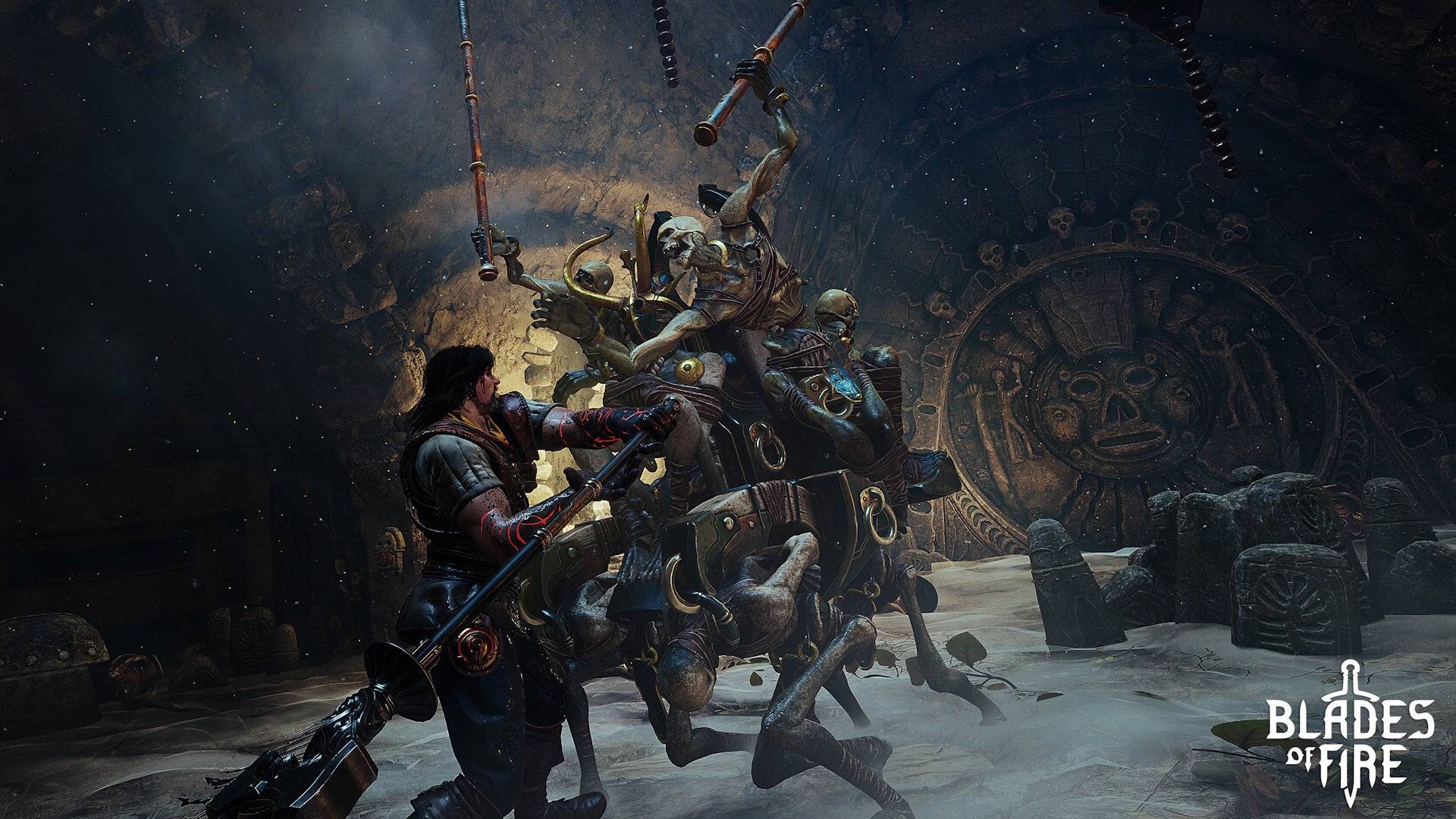 Blades of Fire features some deeply strange enemies that feel like dark cousins of Labyrinth's puppets. | Image credit: MercurySteam / 505 Games
Blades of Fire features some deeply strange enemies that feel like dark cousins of Labyrinth's puppets. | Image credit: MercurySteam / 505 Games
The game truly shines in its mechanics, particularly the combat system, which revolves around directional attacks using every face button on the controller. On a PlayStation pad, triangle targets the head, cross the torso, while square and circle swipe left and right. This system allows you to break through enemy defenses by carefully analyzing their stances. For instance, a soldier guarding their face can be defeated by aiming low. The combat feels visceral, with satisfyingly gruesome effects as blood spurts from inflicted wounds.
The demo's first major boss—a slobbering troll—demonstrated the system's depth. It had a secondary health bar that required dismembering the beast to damage, with the limb removed depending on your attack angle. You could sever its club-swinging arm or even cut off its entire face, leaving it temporarily blind. Stamina, crucial for attacks and dodges, doesn't regenerate automatically but must be manually restored by holding the block button. While the combat echoes the Souls series in its focus on attack patterns and precise dodging, the directional system demands a unique control setup.
After adjusting to the controls, the combat felt refreshingly unique. The weapon system enhances core damage, allowing you to switch between slashing and thrusting stances based on the situation. Weapons also dull with use, requiring sharpening stones or stance changes to maintain effectiveness. Each weapon has a durability meter, and when it shatters, you can repair it at an anvil checkpoint or melt it down for crafting materials.
Blades of Fire Screenshots
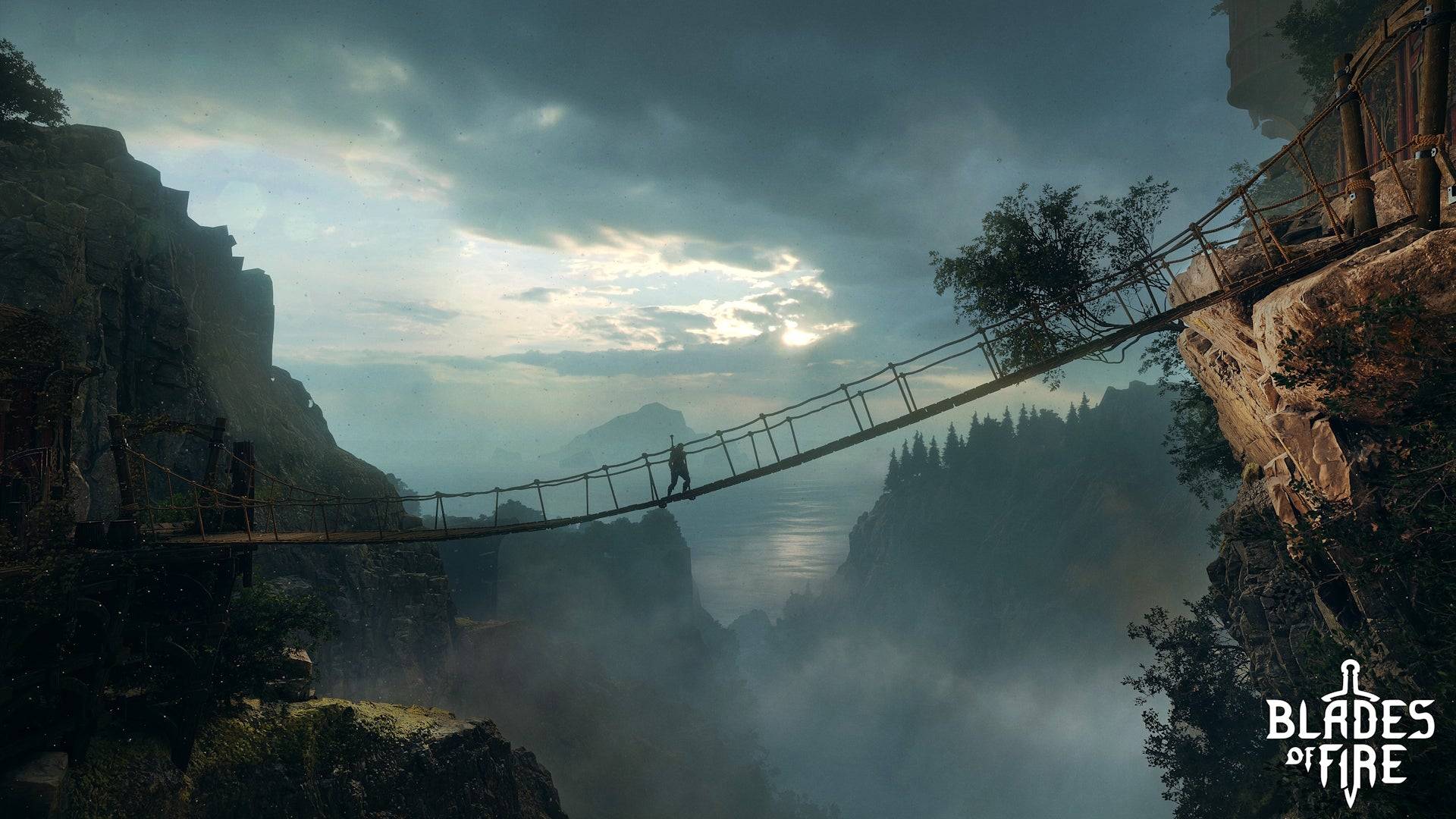
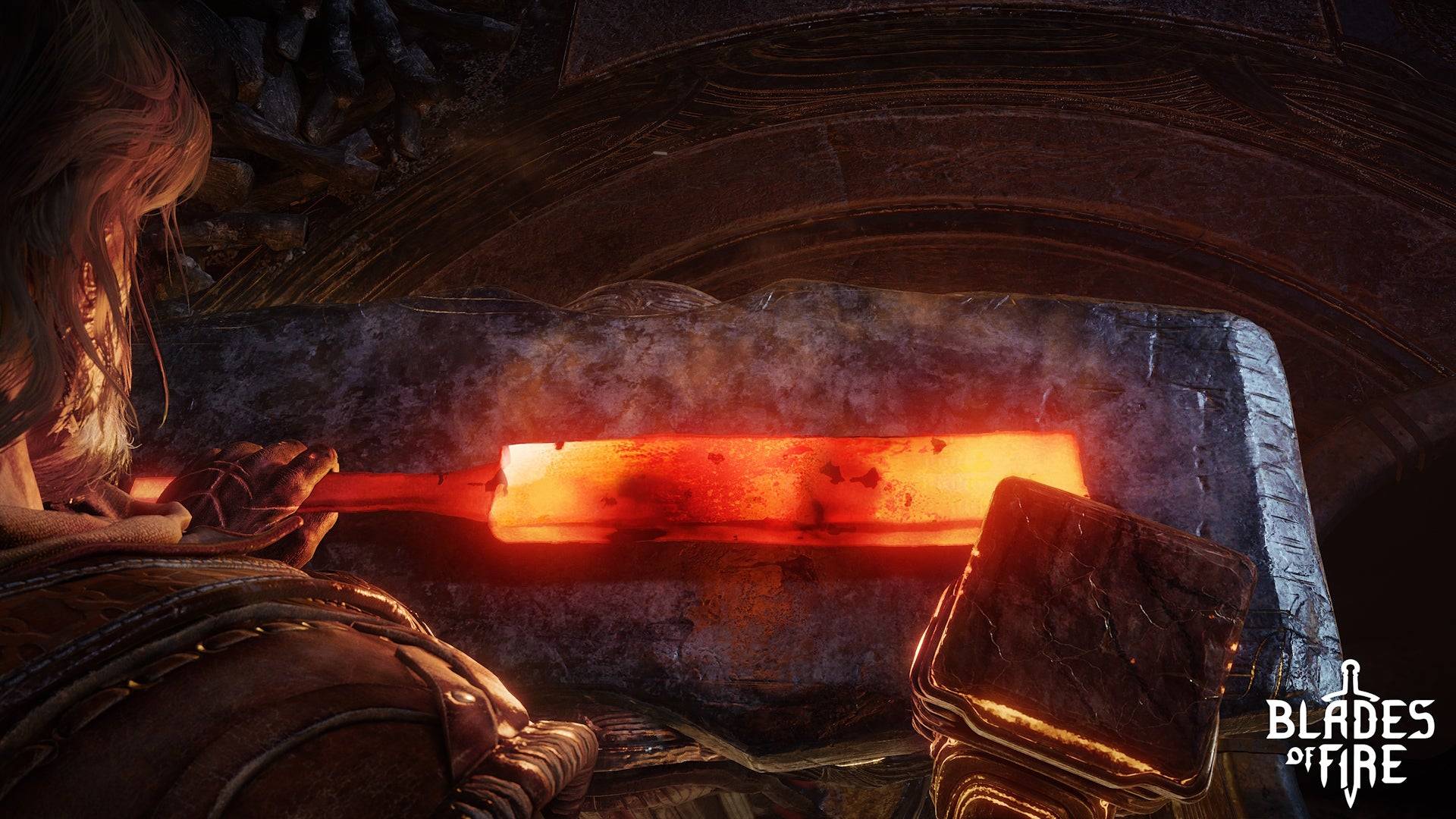 9 Images
9 Images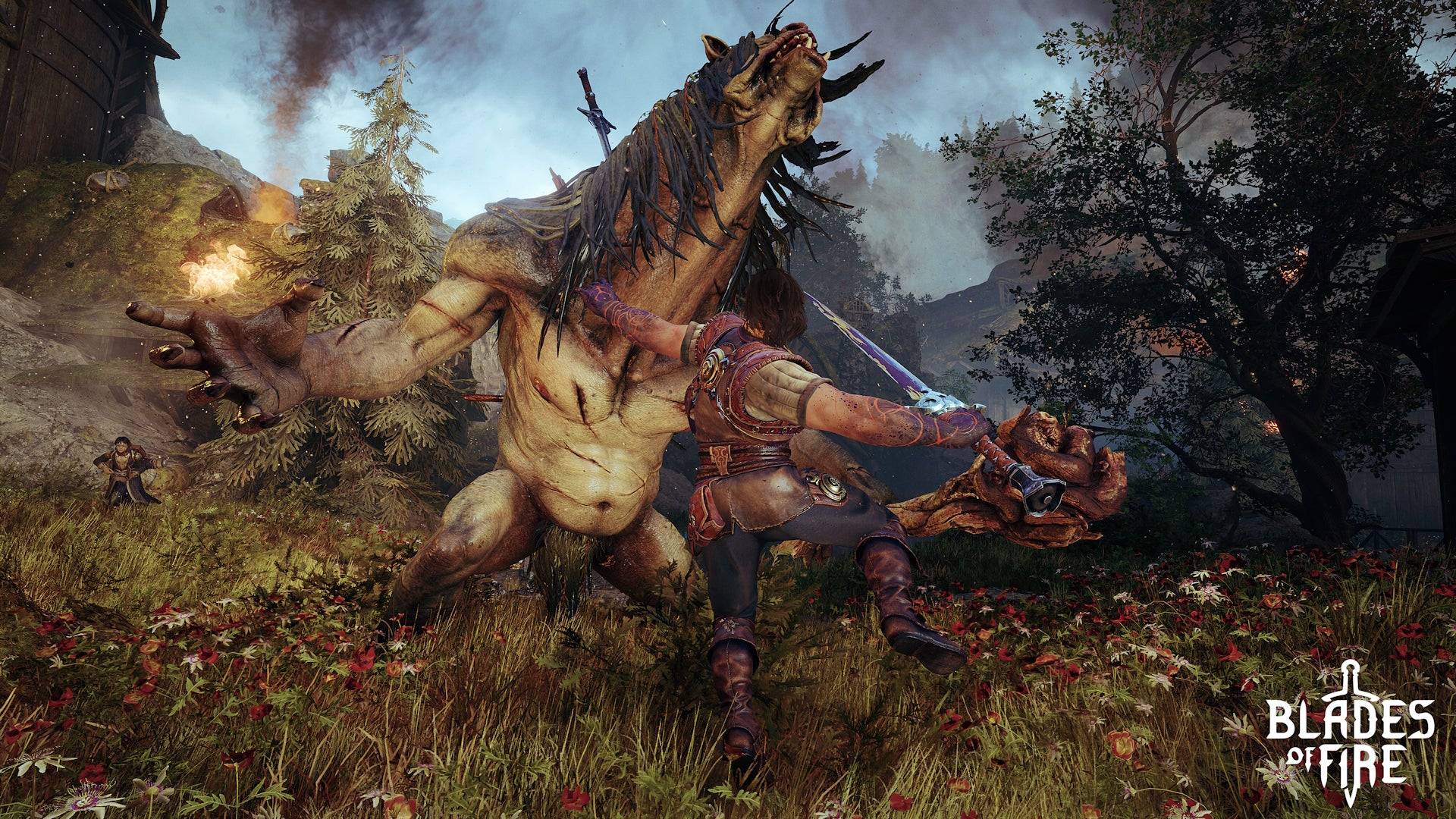
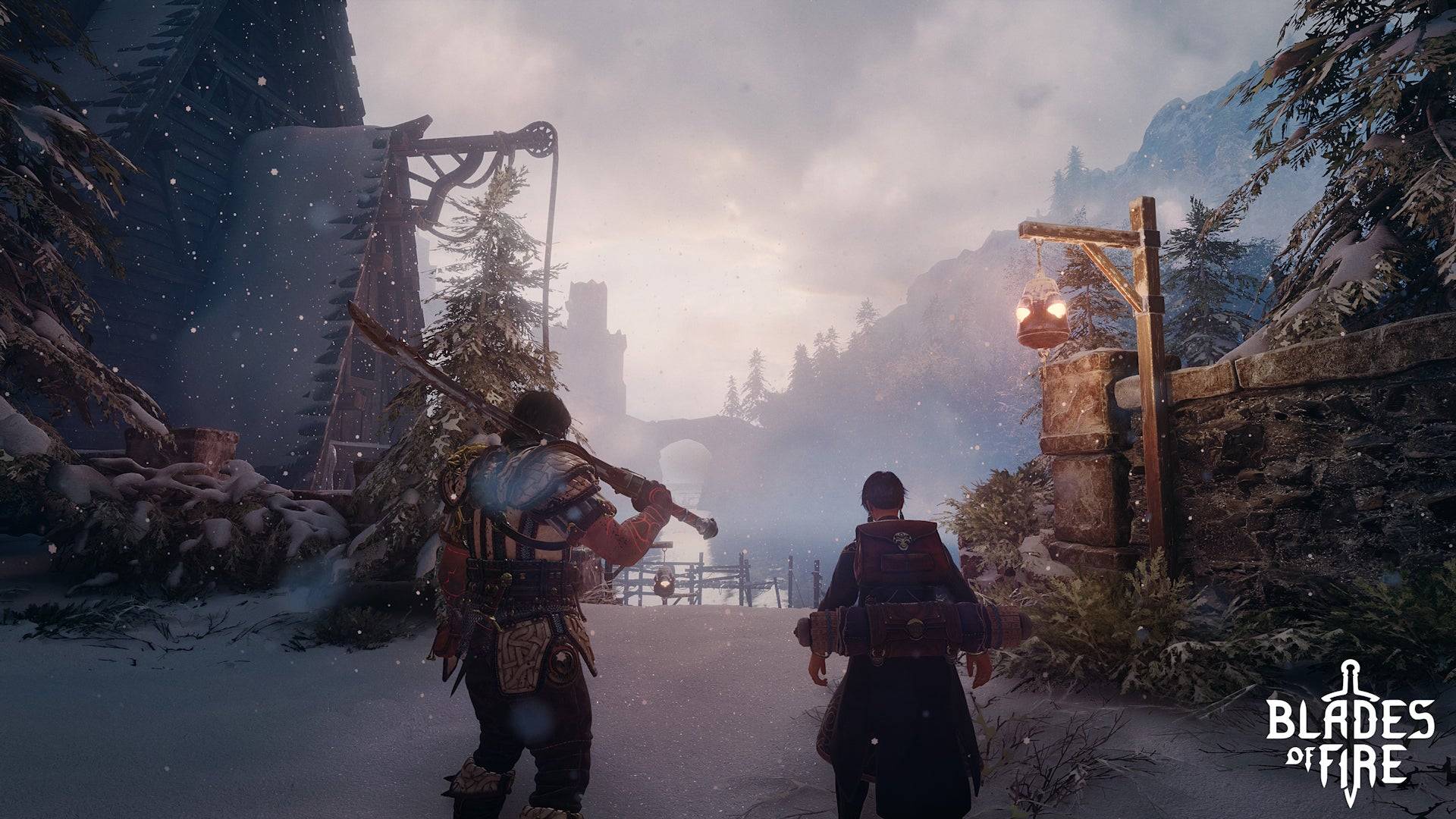
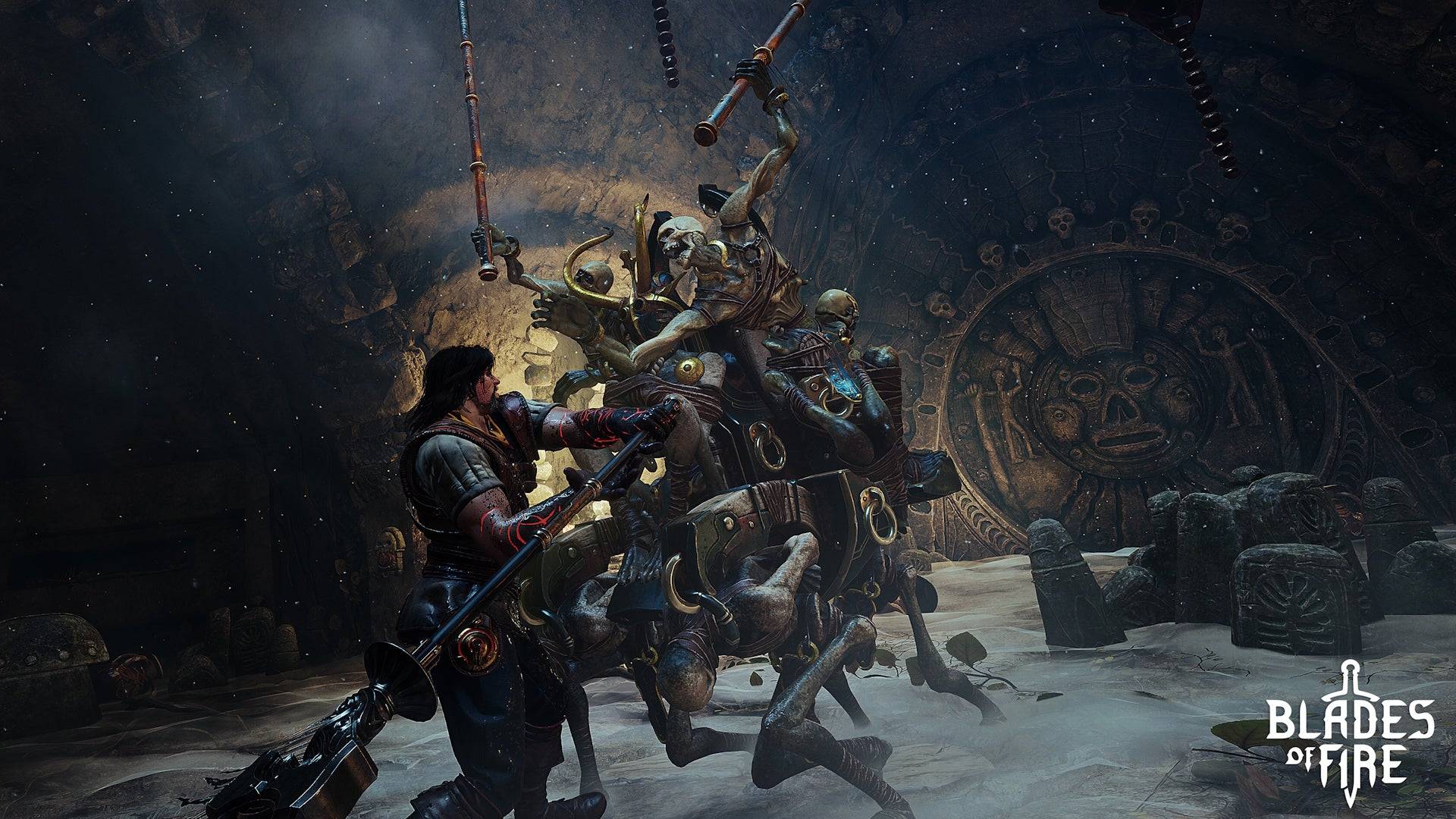
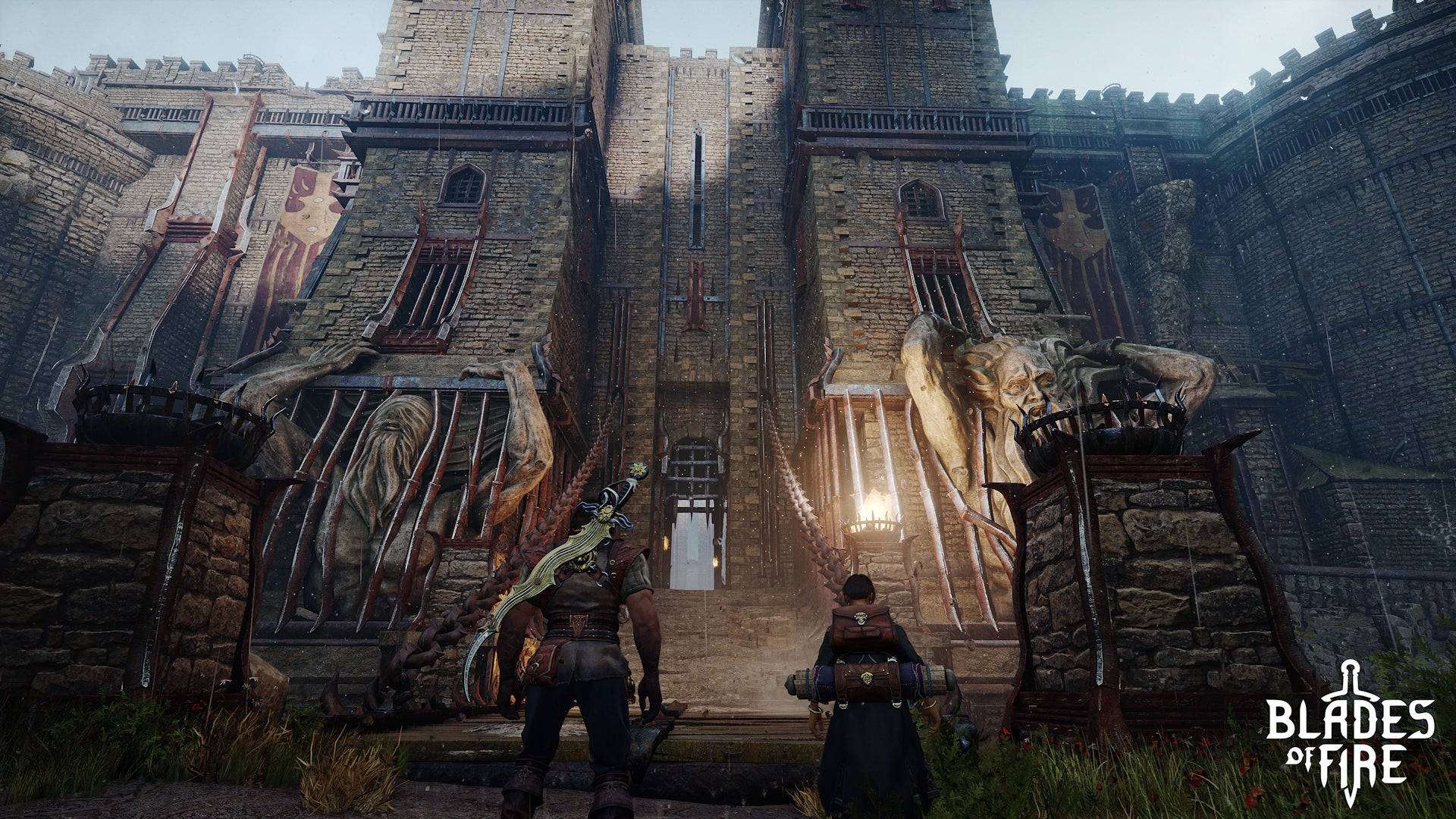
The heart of Blades of Fire lies in its weapons, which require meticulous attention. The game introduces an extensive weapon crafting system, starting with selecting a basic template and sketching it on a chalkboard. You can then modify aspects like the length of a spear's pole or the shape of its head, impacting stats such as range and effectiveness. Different materials affect the weapon's weight and stamina demands, reinforcing the sense of crafting. The process continues with an involved forging minigame where you control the length, force, and angle of hammer strikes to match an ideal curve. Overworking the steel leads to weaker weapons, and your performance is rated in stars, determining how often you can repair it before it breaks permanently.
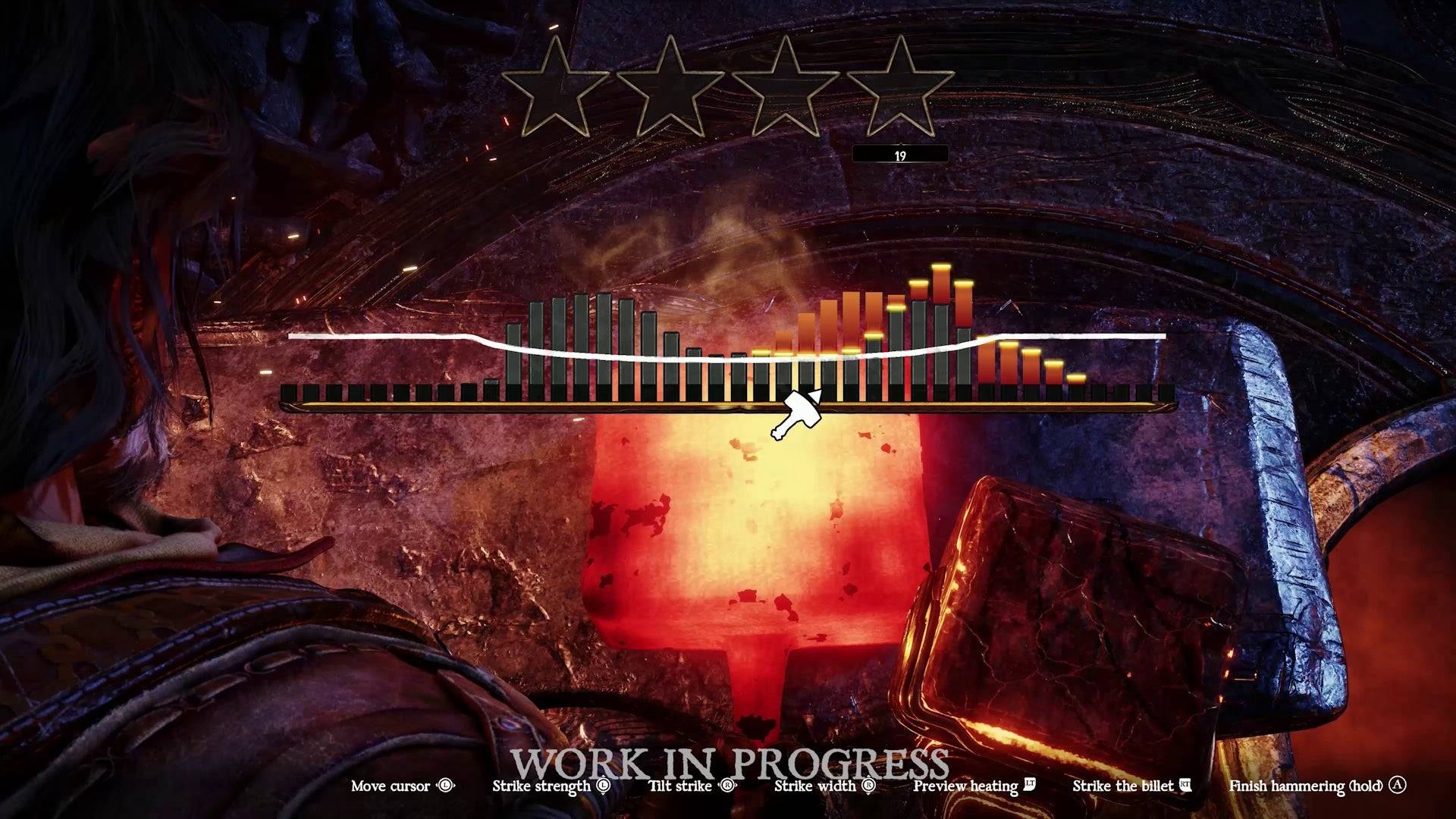 The forging minigame is a great idea that feels a little too obtuse. | Image credit: MercurySteam / 505 Games
The forging minigame is a great idea that feels a little too obtuse. | Image credit: MercurySteam / 505 Games
While the forging concept is innovative, the minigame can be frustrating due to unclear connections between strikes and metal shaping. Improved tutorials or mechanics could enhance this unique feature before launch.
MercurySteam aims for players to form a deep connection with their crafted weapons over a 60-70 hour journey. As you explore and find new metals, you can reforge your weapons to meet new challenges. The death system adds to this bond; upon defeat, you drop your weapon and must retrieve it, emphasizing the relationship between you and your armaments.
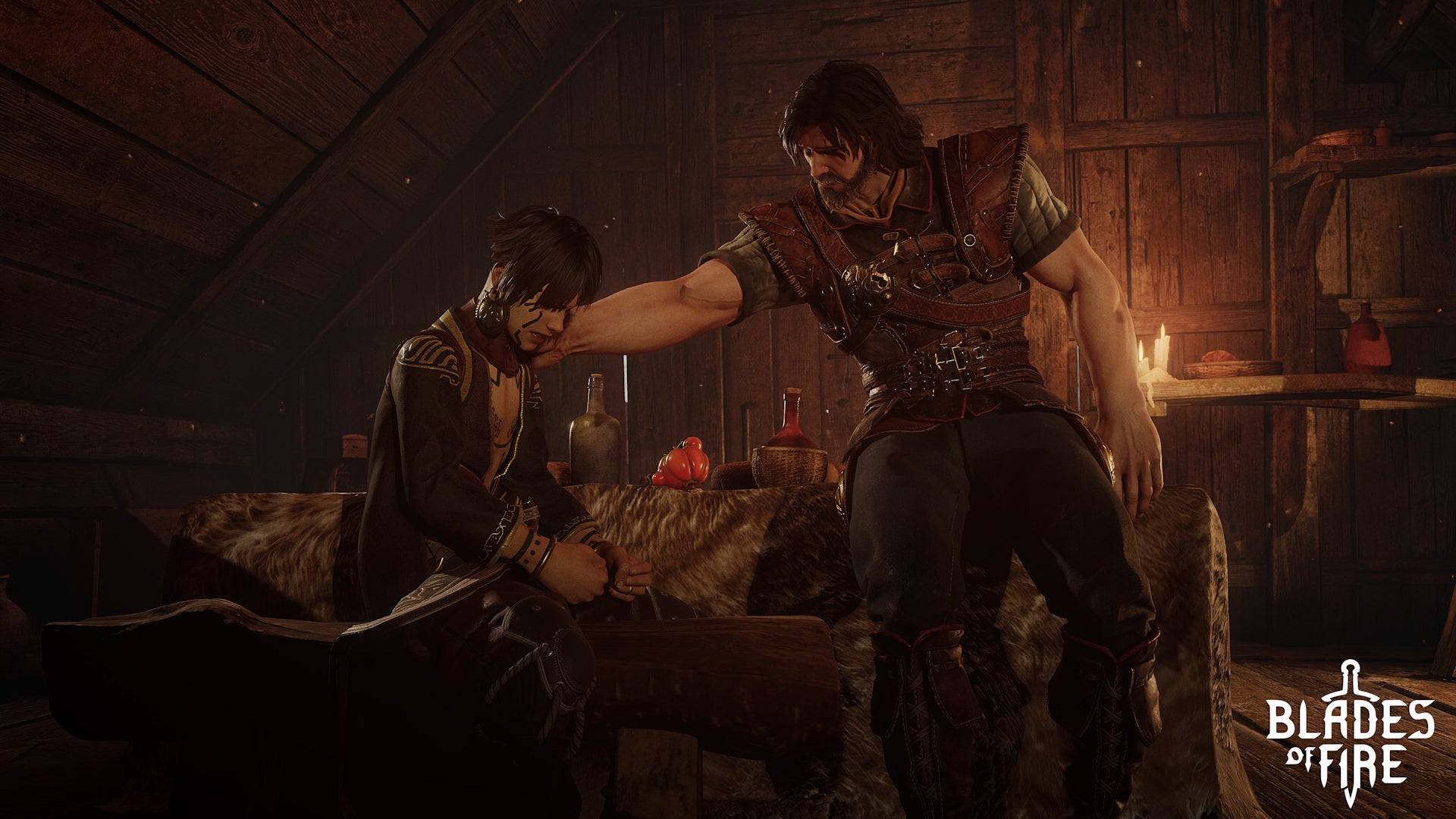 Aran is joined by his young companion, Adso, who can help solve puzzles and comment on the world's lore. | Image credit: MercurySteam / 505 Games
Aran is joined by his young companion, Adso, who can help solve puzzles and comment on the world's lore. | Image credit: MercurySteam / 505 Games
Blades of Fire draws inspiration from multiple sources, including Dark Souls and its successors, reflecting FromSoftware's influence on action games. It also acts as a spiritual successor to Blade of Darkness, developed by MercurySteam's founders. While the game borrows from various influences, it creates a unique identity, distancing itself from direct comparisons.
Despite some concerns about the generic dark fantasy setting's ability to sustain a long adventure and the repetition of certain encounters, the depth of interaction between crafted weapons and combat keeps me intrigued. In a landscape where complex games like Elden Ring and Monster Hunter have found mainstream success, Blades of Fire has the potential to offer something truly fascinating to the gaming community.















